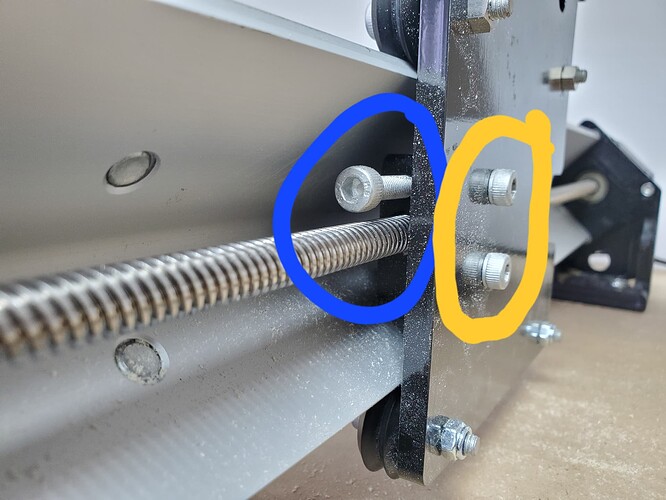@Bizbrar Let me preface my replies by stressing that I am not a tech support guy for Sienci. I am just the mod here, trying to make sure the forum stays a friendly place to be. That said, I’ve had my Mill since the Kickstarter days, I’m put many hours on it, and I’ve read about almost every issue that can come up on this forum.
OK, so know that I’ve set out the “don’t blame me” rules, here goes. 
The anti-backlash nuts are there to make our Mill more precise. When you thread a bolt - or rod in our case - into a nut of any kind, there will always be back and forth movement between the two, owing to machine tolerances in the thread. In a normal bolt and nut situation, when you fully tighten the nut, the back lash goes away. Since we are not tightening the lead screw in the nut, we need a way to take up the slack or back lash. The set screw in the anti-backlash nut spreads the “fingers” on the nut, pushing the internal threads in the nut against the external threads on the lead screw. In this way, it sort of mimics tightening the bolt all the way in a nut. Adjusting the anti-backlash nut more than needed to take out the lash puts more friction between the internal and external threads. This can cause the axis to run slow and does wear out the nut prematurely. Clear as mud??
The hex nut on the end of the lead screws should be tight against the washer on the bearing. This prevents the lead screw from wobbling. I tend to hold the lead screw in a pair of pliers on a spot where it will never contact the anti-backlash nut, and tighten the nut snuggly. Then, I tighten the set screw. I’ve never had a nut loosen. I suggest that you remove the nut and set screw and make sure that the threads on the nut that the set screw screws into are not stripped. If they are fine, you may not be tightening the set screw enough. If they are stripped you will need to contact Sienci for a replacement. You should not need to really reef on that set screw. In fact, do not do that. You can break it.
In terms of “consumables”, there are not many. I tend to go overboard, so keep that in mind when you read my list:
- Delrin wheels
- Anti-backlash nuts
- Bearings for the lead screws
- On a Mk1, the Z axis belt
I can’t count the number of hours that I have on my Mill and I have yet to replace the Z axis belt or any of the anti-backlash nuts. I have replaced 2 bearings and a set of delrin wheels. So, you can decide how many of these you want to have on hand “just in case”.
I’m sure that others here will join in this discussion and will be able to add to what I have set out here. There are many members here with more hours and experience on the Mill than I have. I’m still learning from them.
After you’ve made the adjustments that I mentioned previously, post your results and the group can go from there.
